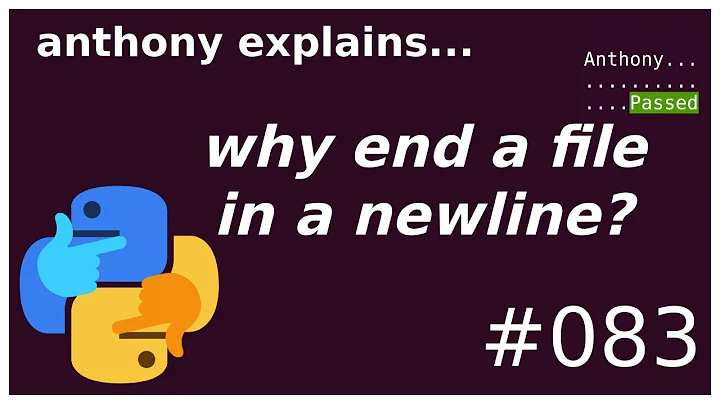concatenate two files without adding a newline
Solution 1
Those trailing newlines are added by nano, not by cat.
Use nano's -L parameter:
-L (--nonewlines)
Don't add newlines to the ends of files.
Or ~/.nanorc's nonewlines command:
set/unset nonewlines
Don't add newlines to the ends of files.
Solution 2
cat does not add newlines. The newline is already present at the end of test1. This is normal: a text file consists of a sequence of lines, and a line consists of a sequence of printable characters followed by a newline character. Thus all non-empty text files end with a newline character.
If you have two text files, and you want to concatenate them together, use cat. You'll get the lines of the first file followed by the lines of the second file.
If you want to do something more complicated, viz, join the last line of the first file with the first line of the second file, you need a more complicated command. For example, you can strip the last character of the first file, and append the second file. With GNU coreutils (i.e. on non-embedded Linux), you can do this:
{ <test1 head -c -1 && cat test2; } >test3
or in two steps:
<test1 head -c 1 >test3 && <test2 cat >>test3
Solution 3
If that's happening, you have most certainly inserted a newline character youself. cat concatenates them, just like it always does. You can test this by using cat to first write and then concatenate:
cat > file1
# write something
# hit Ctrl+D twice to end file
# repeat steps with file2
cat file1 file2
Solution 4
One way:
paste -d'\0' test1 test2
Output:
thisis
Related videos on Youtube
Ariel
Updated on September 18, 2022Comments
-
 Ariel over 1 year
Ariel over 1 yearDoes anyone know whether it is possible to play a video that was synched with iTunes from within an application of your own? In other words - it is of course possible to programmatically create a movie player inside an application, and play movies via HTTP or movies locally stored within the home directory of the application. My question is whether it is possible to access and play a movie that was synched with iTunes, and thus resides elsewhere in the file system.
Thanks! Ariel
-
Art Gillespie over 13 yearsAs of 4.1, MPMediaLibrary only provides access to music, podcasts, and audio books in the iPod library. If enough of us file a bug asking for video access, maybe we'll get it in a future release.
-
-
McKayla about 13 yearsI thought they changed that in 4.0?
-
hhafez about 13 yearspossibly, it has been over a year since I did anything on iOS
-
rahmu about 12 yearsQuestion: Isn't there a UUoC in the two examples you're giving? I understand perfectly what it does, it's printing the content of the file to stdout. However I naively believe that
catshould be used to concatenate only. The fact that you're redirecting test2 to stdin instead of giving it as an argument doesn't change much: you're usingcaton a single file. Am I off thinking this way? and how would you proceed to avoid usingcaton single files? -
 Gilles 'SO- stop being evil' about 12 years@rahmu UUoC is when you pipe
Gilles 'SO- stop being evil' about 12 years@rahmu UUoC is when you pipecatinto another command or when you pipe another command intocat. Here, I'm doing neither. My use ofcatis a useful one: how else would you copy input to output? (Yes, there are other commands that can do this, but there's no reason to prefer them overcat.) And the question was aboutcatanyway.




